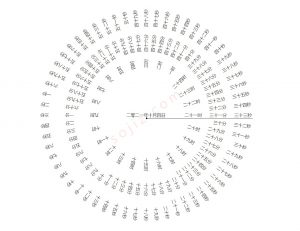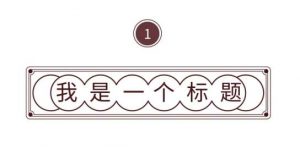1. 前言
本小节我们将介绍如何使用插槽slot,包括默认插槽、具名插槽、作用域插槽。插槽可以使组件的模版变得多样性,让用户在使用组件时可以自定义传入模版内容。在复杂组件中,当我们在使用多个插槽的时候将会是一个难点。但只要我们将每个插槽类型的使用方法学透,相信面对任何复杂插槽的使用的时候都可以游刃有余。
2. 官方解释
Vue 实现了一套内容分发的 API,将 元素作为承载分发内容的出口。 —— 官方定义
<slot>元素作为承载分发内容的出口,可以理解为一个占位符,或者说是子组件暴露的一个让父组件传入自定义内容的接口。插槽内可以包含任何模板代码,包括 HTML,甚至其他的组件。在工作中如果你的组件内的内容是可变的,这个时候我们可以考虑使用插槽。
3. 插槽的类型
<slot>有三种类型,他们分别是:
- 默认插槽
default - 具名插槽
name - 作用域插槽
v-slot
接下来,我们将一步步介绍这三种不同插槽的使用方式。
3.1 默认插槽的使用
在自定义组件中使用<slot />标签进行占位,当我们使用该组件时,在组件标签内写入需要展示的具体内容:
{
components: {
'MyConponent': {
template: '<div><slot /></div>'
}
}
}
<my-conponent>这里是要显示的插槽内容!</my-conponent>我们用一个简单的示例来学习以下如何使用默认插槽:实例演示
<!DOCTYPE html>
<html lang="en">
<head>
<meta charset="UTF-8">
<meta name="viewport" content="width=device-width, initial-scale=1.0">
<meta http-equiv="X-UA-Compatible" content="ie=edge">
<title>Document</title>
</head>
<body>
<div id="app">
<my-component>
句号
</my-component>
</div>
</body>
<script src="https://unpkg.com/vue/dist/vue.js"></script>
<script type="text/javascript">
Vue.component('myComponent', {
template: '<div>Hello !<slot></slot></div>'
})
var vm = new Vue({
el: '#app',
data() {
return {}
}
})
</script>
</html>代码解释:
在 JS 代码第 3-5 行,我们通过 Vue.Component 注册了全局组件 myComponent,并在组件内部使用了默认插槽 slot,在 html 中使用插槽(代码 2-4 行),并在标签内传入组件内需要展示的插槽内容。
3.2 具名插槽的使用
具名插槽就是给<slot />标签加上 name 属性。语法:<my-component><slot name="插槽名字"/></my-component>
{
components: {
'MyConponent': {
template: '<div><slot name="hello"/></div>'
}
}
}
<my-conponent>
<template slot="hello"></template>
</my-conponent>我们用一个简单的示例,来学习一下如何使用具名插槽:
<!DOCTYPE html>
<html lang="en">
<head>
<meta charset="UTF-8">
<meta name="viewport" content="width=device-width, initial-scale=1.0">
<meta http-equiv="X-UA-Compatible" content="ie=edge">
<title>Document</title>
</head>
<body>
<div id="app">
<my-component>
<span slot="name">句号</span>
<span slot="time">2020-02-02</span>
</my-component>
</div>
</body>
<script src="https://unpkg.com/vue/dist/vue.js"></script>
<script type="text/javascript">
Vue.component('myComponent', {
template: '<div>Hello !<slot name="name"></slot> <slot name="time"></slot></div>'
})
var vm = new Vue({
el: '#app',
data() {
return {}
}
})
</script>
</html>代码解释:
在 JS 代码第 4-6 行,我们通过 Vue.Component 注册了全局组件 myComponent,并在组件内部使用了两个具名插槽 name 和 time,在 html 中使用具名插槽(代码 2-5 行),并在标签内传入组件需要展示的插槽内容。
3.3 作用域插槽的使用
有时候,我们在父组件使用插槽时需要访问子组件中的数据,这时候就需要使用作用域插槽。用法:将 data 变量名 作为 <slot> 元素的一个 attribute 绑定上去:
<slot :[自定义变量名]="[需要传入的数据]"></slot>
<!-- 示例 -->
<slot :count="count"></slot>
```,
在使用组件时,通过`v-slot:插槽名字="数据别名"`的方式使用。
```html
<!-- 默认插槽中使用作用域插槽 -->
<my-component>
<template v-slot:default="slotProps">
{{slotProps.count}}
</template>
</my-component>
<!-- 具名插槽中使用作用域插槽 -->
<my-component>
<template v-slot:插槽名字="slotProps">
{{slotProps.count}}
</template>
</my-component>下面我们通过两个例子详细介绍,如何在默认插槽和具名插槽中,使用作用域插槽。
3.3.1 默认插槽中使用作用域插槽
对于默认插槽我们可以省略v-slot后面的插槽名,直接使用v-slot="数据别名"的方式:
示例:实例演示
<!DOCTYPE html>
<html lang="en">
<head>
<meta charset="UTF-8">
<meta name="viewport" content="width=device-width, initial-scale=1.0">
<meta http-equiv="X-UA-Compatible" content="ie=edge">
<title>Document</title>
</head>
<body>
<div id="app">
<my-component>
<!-- 使用 v-slot 接收默认插槽的数据,并把数据命名为 slotProps-->
<template v-slot:default="slotProps">
<br />
<!-- 使用 插槽数据-->
我叫:{{slotProps.detail.name}},我的爱好是:{{slotProps.detail.love}}
</template>
</my-component>
<my-component>
<!-- 默认插槽可以忽略v-slot后面的插槽名-->
<template v-slot="slotProps">
<br />
<!-- 使用 插槽数据-->
我叫:{{slotProps.detail.name}},我的爱好是:{{slotProps.detail.love}}
</template>
</my-component>
</div>
</body>
<script src="https://unpkg.com/vue/dist/vue.js"></script>
<script type="text/javascript">
Vue.component('myComponent', {
// 在默认插槽中传入数据 detail
template: '<div>Hello !<slot :detail="detail"></slot></div>',
data() {
return {
detail: {
name: '句号',
love: 'coding'
}
}
}
})
var vm = new Vue({
el: '#app',
data() {
return {}
}
})
</script>
</html>代码解释:
在 JS 代码第 3-14 行,我们通过 Vue.Component 注册了全局组件 myComponent。
在 HTML 代码第 2-8 行,使用 v-slot:default=“数据别名” 的方式接收默认插槽的数据,并把数据命名为 slotProps。
在 HTML 代码第 9-16 行,使用 v-slot=“数据别名” 的方式接收默认插槽的数据(省略默认插槽名),并把数据命名为 slotProps。
3.3.2 具名插槽中使用作用域插槽
具名插槽必须在v-slot后面加上插槽名,否则数据无法在具名插槽中使用:
示例:实例演示
<!DOCTYPE html>
<html lang="en">
<head>
<meta charset="UTF-8">
<meta name="viewport" content="width=device-width, initial-scale=1.0">
<meta http-equiv="X-UA-Compatible" content="ie=edge">
<title>Document</title>
</head>
<body>
<div id="app">
<my-component>
<!-- 使用 v-slot 接收具名插槽 detail 的数据,并把它命名为 slotProps-->
<template v-slot:detail="slotProps">
<br />
<!-- 使用 插槽 detail 的数据-->
我叫:{{slotProps.detail.name}},我的爱好是:{{slotProps.detail.love}}
</template>
</my-component>
</div>
</body>
<script src="https://unpkg.com/vue/dist/vue.js"></script>
<script type="text/javascript">
Vue.component('myComponent', {
// 定义具名插槽 detail 并传入数据 detail
template: '<div>Hello !<slot :detail="detail" name="detail"></slot></div>',
data() {
return {
detail: {
name: '句号',
love: 'coding'
}
}
}
})
var vm = new Vue({
el: '#app',
data() {
return {}
}
})
</script>
</html>在 JS 代码第 3-14 行,我们通过 Vue.Component 注册了全局组件 myComponent。
在 HTML 代码第 2-8 行,使用 v-slot:default=“数据别名” 的方式接收默认插槽的数据,并把数据命名为 slotProps。

























暂无评论内容